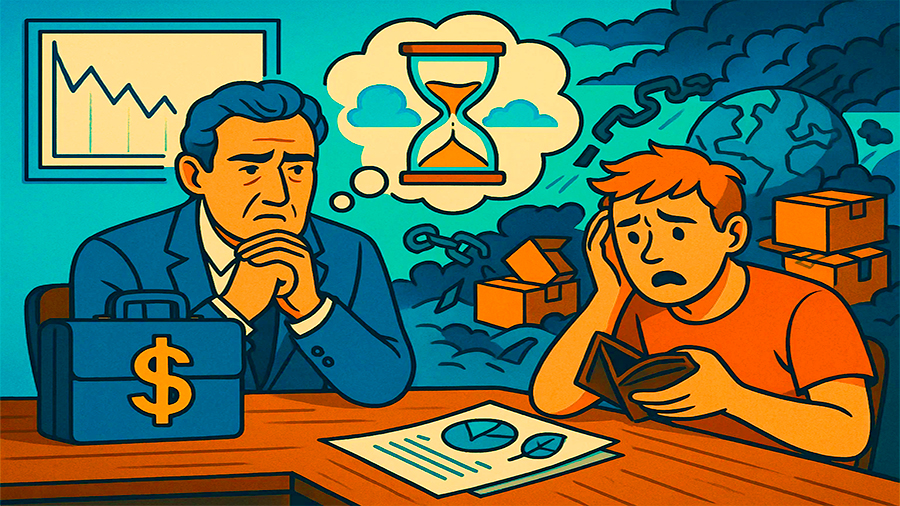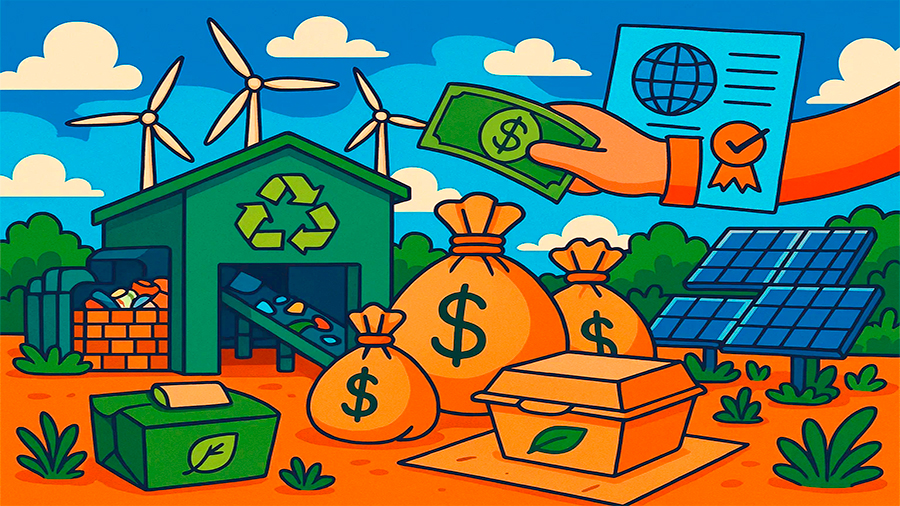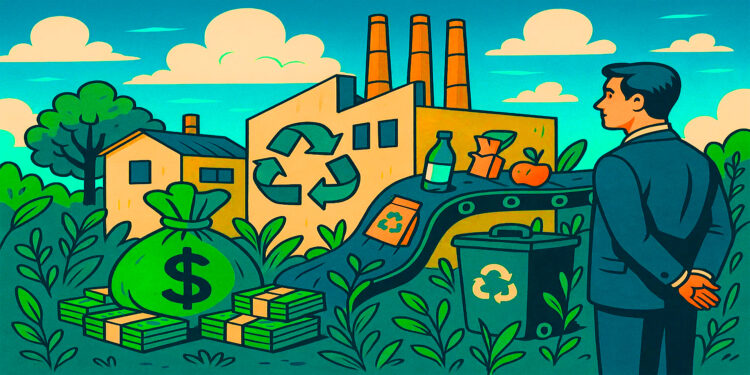Loans For Transitioning To Zero-Waste Production
Zero-waste production is no longer a distant vision for environmentally conscious companies—it is becoming a practical necessity. Pressure from regulators, consumers, and global supply chains has accelerated the need for cleaner, more efficient manufacturing processes. Yet the transition requires heavy investment in new technologies, redesign of production cycles, and training of employees. For most businesses, internal capital is insufficient to cover these costs. Loans dedicated to sustainability and circular economy projects are emerging as vital tools, enabling firms to invest today while spreading repayment over the years. This financial mechanism is redefining how industries move toward eco-friendly operations.
Why Zero-Waste Production Needs Loans
Adopting zero-waste principles means changing the way a company sources materials, designs products, and manages waste streams. Instead of discarding by-products, firms aim to reuse, recycle, or repurpose them, creating closed-loop systems. Such changes require new equipment—advanced sorting machines, recycling units, or biodegradable material production lines. They also demand research, pilot projects, and staff training. These are significant expenses that many businesses cannot absorb without external financing. Loans offer the necessary capital to undertake these projects now, rather than waiting for gradual reinvestment of profits. In practice, borrowed funds make the difference between maintaining traditional, wasteful practices and embracing sustainable cycles that align with environmental goals.
Pressure From Global Markets
International buyers increasingly demand proof of sustainability. Companies that cannot demonstrate progress toward zero-waste risk losing contracts. Loans allow them to meet these expectations without sacrificing financial stability.

Types Of Loans Supporting Zero-Waste Initiatives
Financial institutions recognize the demand for eco-focused borrowing and now offer specialized loans for environmental projects. These loans often feature lower interest rates, longer repayment terms, or performance-based incentives tied to sustainability goals. Traditional bank loans remain available, but they lack the targeted benefits of green financing. Development banks and government-backed institutions play a key role in expanding access, especially for small and medium-sized enterprises (SMEs) that struggle to secure favorable terms under conventional lending frameworks.
Green Investment Loans
These are designed specifically for sustainability projects, providing capital for equipment, research, and implementation of eco-friendly processes. Lenders often evaluate not only financial returns but also environmental impact.
Performance-Linked Loans
Some loans reduce interest rates if the company meets defined sustainability metrics, such as reducing landfill waste by a specific percentage. This creates direct financial incentives for environmental performance.
How Loans Are Used In Zero-Waste Projects
The transition to zero-waste involves multiple areas of spending. Borrowed funds can be allocated to waste processing facilities, recycling technology, renewable energy integration, or redesign of packaging systems. They can also finance certifications and audits that demonstrate compliance with international sustainability standards. The diversity of applications reflects the complexity of zero-waste strategies. Each business must map its own production cycle to identify where borrowed funds can deliver the greatest impact.
Examples Of Investment Areas
Loans may cover the purchase of machinery that converts by-products into raw material, construction of on-site composting facilities, or development of biodegradable packaging. Each of these investments reduces waste while opening new revenue streams.
Benefits And Challenges Of Borrowing For Zero-Waste
The benefits of loans for sustainability projects extend beyond environmental gains. Businesses enhance their reputation, attract eco-conscious customers, and often reduce long-term costs by improving efficiency. However, borrowing also introduces challenges. Companies must manage debt responsibly and ensure that expected savings or new revenues offset repayment obligations. Overestimating returns or underestimating costs can create financial stress. Moreover, lenders may require extensive documentation and sustainability assessments, which can slow down access to capital. Balancing ambition with realistic financial planning is critical for success.
The Long-Term Payoff
Although initial borrowing increases liabilities, successful zero-waste transitions reduce operating costs over time. Waste disposal fees decline, resource efficiency improves, and new markets open for recycled or eco-certified products.
Comparison Of Loan Types For Zero-Waste Projects
The table below highlights the main categories of loans available for financing environmentally friendly production cycles:
| Loan Type | Purpose | Special Features | Risks |
|---|---|---|---|
| Green Investment Loan | Financing eco-focused equipment and processes | Preferential interest rates, sustainability focus | Requires strict compliance documentation |
| Performance-Linked Loan | Encourages measurable environmental progress | Interest reductions tied to waste reduction targets | Penalties if goals are not achieved |
| Standard Commercial Loan | General financing, can be applied to zero-waste projects | Widely accessible, flexible use | Higher costs, no sustainability benefits |
| Development Bank Loan | Supports SMEs and large-scale sustainability programs | Government guarantees, longer repayment terms | Limited availability, project scrutiny required |
Choosing The Right Structure
Businesses must align loan structures with their strategy. Performance-linked loans work best for firms confident in their ability to meet clear metrics, while development bank loans are suited for larger, long-term transformations.

Risks For Lenders And Borrowers
Lenders face uncertainty regarding the financial returns of zero-waste projects. Many of the benefits are long-term, while repayment obligations are short-term. To mitigate this, they require thorough business plans and sustainability impact studies. Borrowers, meanwhile, risk overcommitting if they underestimate the time needed for savings to materialize. Companies that depend heavily on global supply chains must also consider risks of disruption that could delay repayment. Effective collaboration between lenders and borrowers ensures that both parties understand the environmental and financial dynamics of zero-waste transitions.
Risk Mitigation Strategies
Insurance products, phased disbursements, and external audits help reduce uncertainty. Borrowers can also improve credibility by partnering with recognized sustainability organizations or securing government guarantees.
The Role Of Governments And International Institutions
Governments play a crucial role in promoting loans for zero-waste production. Many offer subsidies, guarantees, or tax incentives to reduce borrowing costs. International development banks provide long-term capital for projects in emerging markets, where access to green finance is limited. These institutions help scale up initiatives by supporting not only individual companies but also entire sectors, fostering systemic change. By blending public and private financing, governments and global organizations ensure that zero-waste strategies become feasible for a wide range of industries.
Policy As A Catalyst
Without supportive policies, many companies would hesitate to borrow for eco-transitions. Regulatory frameworks, such as mandatory waste reduction targets, create demand for loans by making sustainability investments unavoidable.
Future Outlook For Zero-Waste Financing
As sustainability becomes a central business priority, loans for zero-waste production will grow in importance. Financial institutions are expected to expand green lending portfolios, while new products will tie interest rates more directly to environmental performance. Digital platforms may streamline loan applications, enabling smaller firms to access capital more easily. Over time, financing zero-waste will be seen not as an optional niche but as a standard practice, embedded in the broader shift toward circular economies. Companies that act early will not only gain competitive advantages but also set benchmarks for entire industries.
Integration With Global Supply Chains
Large multinational corporations are already pressuring suppliers to demonstrate sustainability. Access to loans for zero-waste projects will determine whether smaller firms can remain part of these global networks or risk being left behind.
The Conclusion
Loans for transitioning to zero-waste production bridge the gap between ambition and implementation. They enable companies to invest in sustainable technologies, restructure production cycles, and meet the rising demand for environmental accountability. While borrowing introduces risks, careful planning, targeted loan structures, and supportive policies ensure that businesses can repay debt while achieving ecological goals. As industries worldwide move toward circular economies, loans will be a cornerstone of the transition, empowering businesses of all sizes to reduce waste, improve efficiency, and build sustainable futures.





